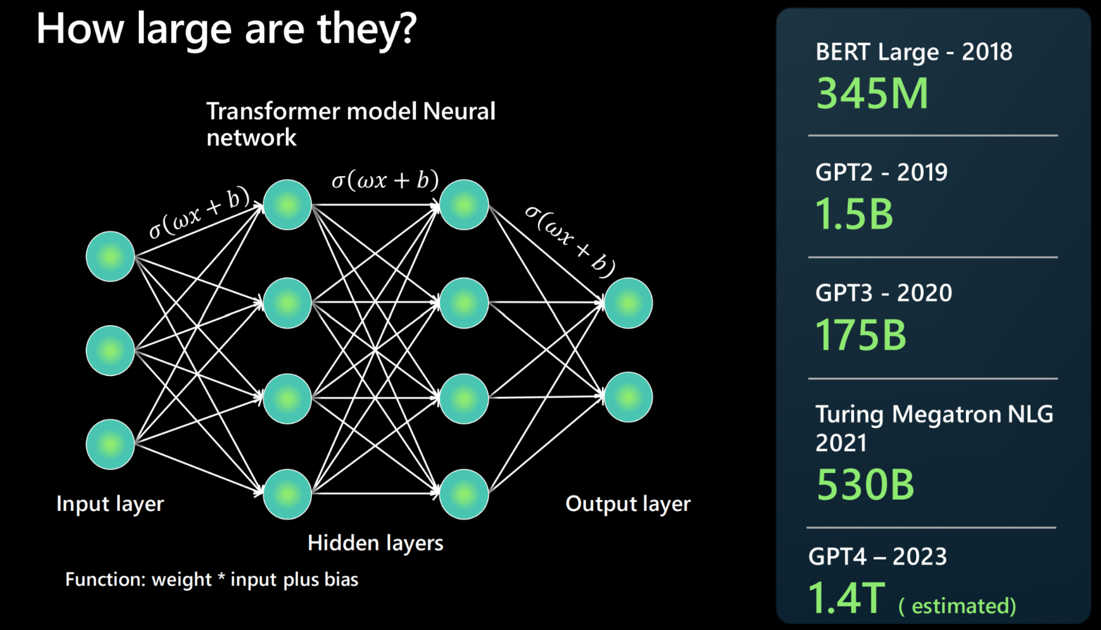Understand LLMs
A large language model (LLM) is a type of AI that can process and produce natural language text. It learns from a massive amount of data gathered from sources like books, articles, webpages, and images to discover patterns and rules of language.
How large are they?
An LLM is built by using a neural network architecture. It takes an input, has several hidden layers that break down different aspects of language, and produces at the output layer.
People often report how the latest foundational model is bigger than the last, but what does this mean? In short, the more parameters a model has, the more data it can process, learn from, and generate.
For each connection between two neurons of the neural network architecture, there's a function: weight * input + bias. This network produces numerical values that determine how the model processes language.
LLMs are indeed large, and growing quickly. Some models could calculate millions of parameters in 2018. But today GPT-4 can calculate trillions of parameters.

Where do foundational models fit into LLMs?
A foundation model refers to a specific instance or version of an LLM. For example, GPT-3, GPT-4, or Codex.
Foundational models are trained and fine-tuned on a large corpus of text, or code if it's a Codex model instance.
A foundational model takes in training data in all different formats and uses a transformer architecture to build a general model. Adaptions and specializations can be created to achieve certain tasks via prompts or fine-tuning.
How does an LLM differ from more traditional natural language processing (NLP)?
There are a few things that separate traditional NLPs from LLMs.
| Traditional NLP | Large language models |
|---|---|
| One model per capability is needed. | A single model is used for many natural language use cases. |
| Provides a set of labeled data to train the ML model. | Uses many terabytes of unlabeled data in the foundation model. |
| Describes in natural language what you want the model to do. | Highly optimized for specific use cases. |
What doesn't an LLM do?
As important as it is to understand what an LLM can do, it's equally important to understand what it can't do so you choose the right tool for the job.
Understand language: An LLM is a predictive engine that pulls patterns together based on pre-existing text to produce more text. It doesn't understand language or math.
Understand facts: An LLM doesn't have separate modes for information retrieval and creative writing; it simply predicts the next most probable token.
Understand manners, emotion, or ethics: An LLM can't exhibit anthropomorphism or understand ethics. The output of a foundational model is a combination of training data and prompts.